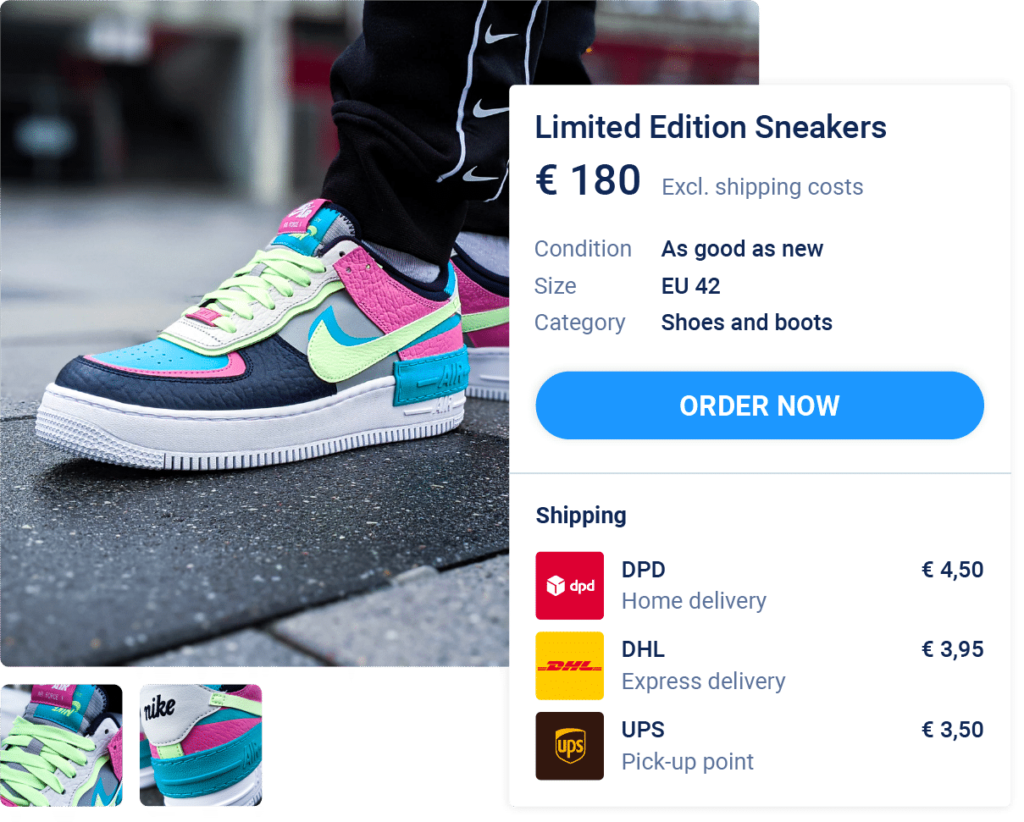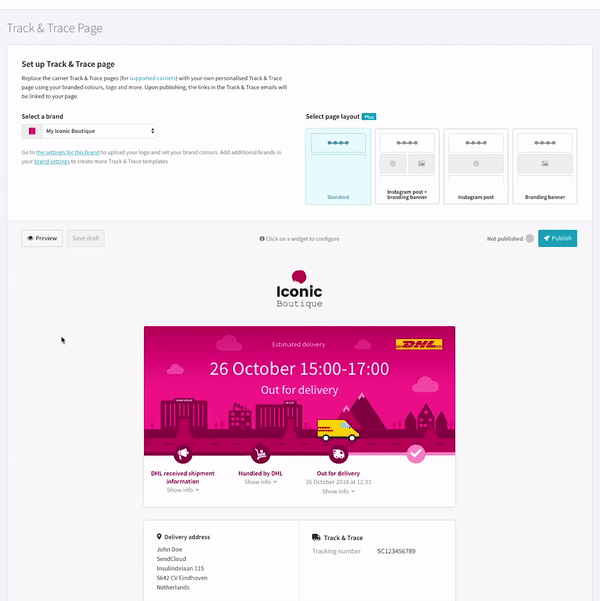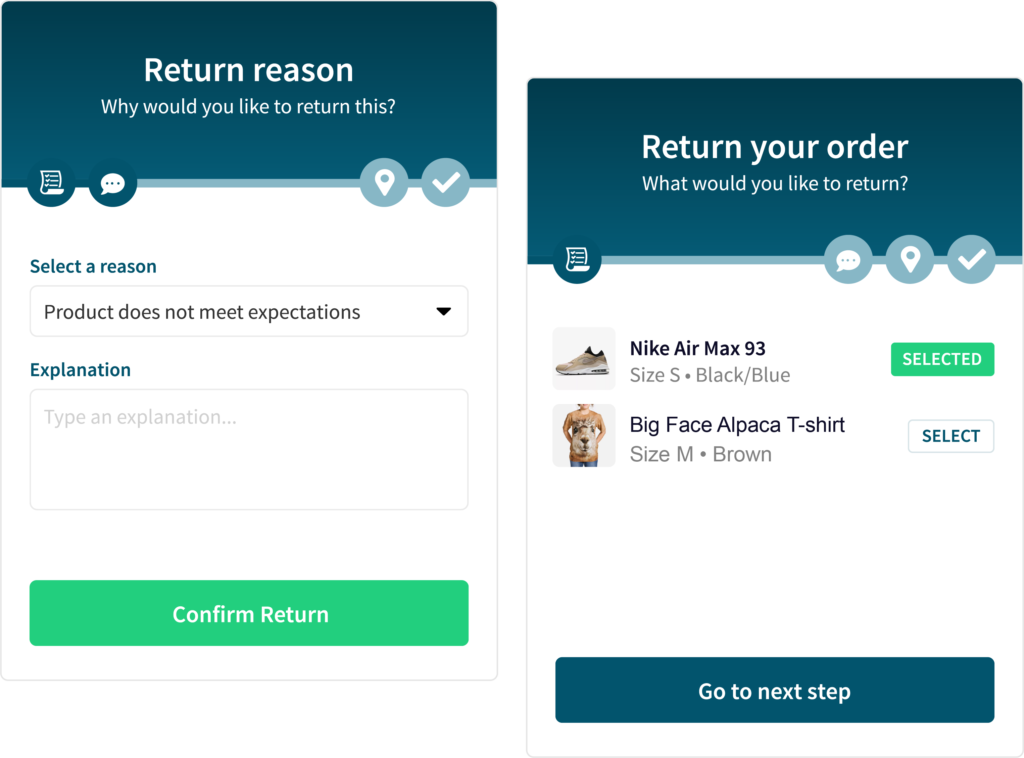How improving checkout and shipping boosts conversion and retention

Nothing is more important for your online shop than turning site visitors into loyal, paying customers. Conversion and, especially, repeat business are the top priorities for keeping your e-commerce business thriving. And as an online retailer, you need to do everything you can to lower the threshold and make customers happy to buy from your shop again and again.
At virtually every stage of the customer journey, there are plenty of smart actions you can take to score points with your customers. But one of the most overlooked moments for driving conversion and repeat business is what happens after the customer has searched, found and added items to their cart.
Besides an optimized onsite search engine, a smooth, customer-focused checkout and shipping experience is essential for creating a happy and loyal customer base. In this article, we want to give you some good ideas for making your checkout and shipping process as effective and customer-friendly as possible, while also avoiding some common mistakes. Here is your list of ‘do’s and don’ts’ for improving your shipping and checkout to boost conversion.
How to create a smart shopping cart

When it comes to conversion, your site’s shopping cart is where everything starts to get real. Researchers estimate that as many as three out of four shopping carts are abandoned before the purchase is completed. With cart abandon rates at an all-time high, it’s important for e-commerce retailers to make the shopping cart an inviting, user-friendly safe zone for shoppers.
Here are some do’s and don’ts for sealing the deal with your store’s shopping cart:
Do:
- Automatically save items to the cart for later, so that if the user leaves the site and returns, the items they selected will still appear.
- Make the cart clearly visible at all times. Ideally, let it appear as a drop-down menu, so that users can view their selected items without having to navigate from the page they are currently viewing.
- Display shipping costs and any additional costs (such as sales tax) in the shopping cart, so the user knows exactly what the price is before starting the checkout process. This prevents unpleasant surprises and makes the customer less likely to bounce when checking out. While some argue that you should keep these costs hidden until further into the checkout process, total transparency is always the better approach.
- Make it very easy for the user to navigate from the shopping cart back to the shop itself to continue shopping. It is annoying to get stuck inside a dead end just because you click on the shopping cart button. Encourage further shopping by making a seamless transition between the cart and the shop.
Don’t:
- Don’t force users to log in to an account just so they can add items to the cart or save them for later. This is off-putting for first-time customers who may not have an account yet, but still want to add items to the cart.
- Don’t automatically navigate to the cart when a user adds an item to it. Let the user do the navigating. If they want to go to the cart, they will go there on their own.
- Don’t automatically navigate to checkout when a user adds an item to the cart. This is even worse than forcing the user to the cart. Let them control the pace and shop at their own leisure.
How to streamline the checkout process
Once a customer starts the checkout process, you’ll want to do everything possible to make sure they complete the order without abandoning the cart. The checkout process must be crystal clear. Customers expect a simple, straightforward checkout without any surprises.
Here are some do’s and don’ts for tweaking your checkout:
Do:
- Allow users to place orders as a guest. Though you ideally want to register every customer, many customers are put off by the registration process and would prefer a quick checkout. Even if it’s not ideal, it’s better to give them what they want than to avoid losing a sale.
- Enable customers to review their shopping cart with exact shipping costs before completing the order. Again, transparency will leave a positive impression.
- Allow one-click checkout for customers who are logged in to their account. A one-click checkout is the most customer-centric solution for checkout. This lowers the threshold as far as possible, enabling your registered customers to complete the transaction without any hassle.
- Accept as wide a range of payment options as possible. According to payment service provider Adyen, 45% of UK online shoppers have broken off a transaction because of difficulties with payment. If a customer is ready to give you their money, make sure you are able to accept it in any way possible.
- Automate order processing once payment is completed. The faster you can process an order, the sooner your customer will get their merchandise and the happier they will be. The key to faster order processing is automation. Be sure to use an order processing platform that includes automation options for speeding up the shipping process.
Don’t:
- Don’t use pop-ups or disruptive web design features during checkout. Customers may be annoyed or confused by any unexpected messaging that appears during checkout.
- Don’t display ads during checkout. This may cause confusion and result in frustration for the customer. If you want to upsell, consider doing that in your shopping cart, but make it very clear that you are displaying “suggested” items, so the user does not think they have added incorrect items to their cart or, even worse, suspect that there is something wrong with your site.
How to boost repeat business with excellent shipping
From a customer’s perspective, shipping and delivery are the most exciting moments of the online shopping experience. It’s more important than ever to make the shipping experience completely hassle-free. Customers expect flexible, convenient shipping options, ideally free of charge.
The decision to offer free shipping may be out of budget for some retailers, but it is definitely worth exploring if you consider that 96% of shoppers say that the option of free shipping influences their decision to make a purchase online.
Even if you choose not to offer free shipping, there are still many ways you can finely tune your shipping process to boost customer loyalty. Check out these do’s and don’ts:

Do:
- Offer multiple shipping options. Use a platform that enables your customers to choose the carrier and shipping service they prefer. Some platforms even enable you as an online retailer to easily add multiple carriers to your online checkout process without having to negotiate individual contracts with those carriers.
- Consider offering free shipping. We know, there’s not really any such thing as “free shipping” for an online retailer. But trend watchers like Forbes now argue that retailers are virtually guaranteed to boost conversion when they decide to shoulder the shipping costs for their customers. You might consider starting with offering free shipping on orders that exceed a specific (high) value.
- Use tracking notifications for retargeting. Order tracking notifications are a perfect opportunity for representing your brand and its products to your existing customers. Customers love to track the shipping status of their orders. They are very likely to open and read an email containing a shipping status update. Send them fully branded tracking notifications that include ads for additional products and links to your shop’s blog and social media channels.
- Make unboxing part of the fun. After waiting (hopefully not for too long) to receive their merchandise, your customers will be eager and excited to unbox the product when it arrives. This is an additional opportunity for you to create a branded experience that builds on your customer’s good mood. Skip the generic packaging materials and use premium, memorable packaging that enhances the customer’s unboxing experience. This is a great way to boost customer loyalty and make a strong impression of your products. And some shoppers may even reward you with a viral unboxing video posted on social media.

Don’t:
- Don’t make your customers visit third-party sites for shipping-related queries. Avoid sending generic tracking notifications that direct your customers away from your own domain. Instead, offer personalized tracking notifications and a user-friendly platform for shipping-related queries, all from your own website. This will make your customers feel like you are offering them a full-coverage service experience.
- Don’t use slow carriers unless you also offer faster options. On average, customers are not willing to wait any longer than 4.5 days to receive their items. If they have to wait longer than that, they might prefer to buy from your competitors who offer faster shipping. While you may offer slower (free) shipping options for those customers who are not in a hurry, always give your customers the option of faster delivery in case they want it.
How to gain customer loyalty with smooth return shipping
As important as shipping is to building a loyal customer base, the way your shop handles its returns is also a surprising driver for repeat business. That’s why you should carefully plan your return shipping policy to make it as efficient, convenient and customer-centred as possible.
Return shipping is a fact of life for e-commerce retailers. In fact, researchers estimate that the return rate for items bought online is between 15 and 40%. When a customer buys a product online, they now expect a fast, no-hassle return shipping solution in case they change their mind after unboxing it.
What seems like a lost sale is actually an opportunity to boost customer loyalty. Here’s how to do return shipping right (and wrong):
Do:
- Offer return shipping directly through your website. Show your customers that you care about giving them a positive experience, even if they want to return an item. Make the return shipping a quick one-click process through your own website. Allow them to simply access and print a shipping label to return the item to you. An added advantage is that you then also have a complete record of the return shipment, so you can be sure that the merchandise returns, and offer full support to your customer in case they need help.
- Consider enclosing a return shipping label with the product to begin with. Then, all your customer needs to do is box the product back up and hand over the package to a drop-off point or arrange doorstep pickup with the carrier.
- Think about offering free return shipping. When it comes to returning an item, there is no solution more customer friendly than free return shipping. You may be hesitant to cut into your margins by offering free returns, but there are also really valid reasons for considering it. According to market research, more than eight out of ten shoppers say that they are likely to remain loyal to a company based on a positive return-shipping experience. In other words, hassle-free return shipping (emphasis on the “free”) could be just the thing your company needs to boost repeat business.
- Offer an extended returns period. In most countries, the legal return limit for merchandise bought online is defined by law. In the EU, for example, the minimum return period retailers must offer customers is 14 days. To give your customers an added service, consider offering an even longer return period. This will show them that you care about their convenience and want for them to be able to make up their minds about a product at their own pace. Anything you can do to make a good impression on your customer might just help you to win them back for repeat business.

Don’t:
- Don’t make your customers sort out return shipping all by themselves. There is nothing more frustrating to a customer than having to call a carrier and arrange return shipping themselves. If you expect a customer to deal with a third party, then you are basically telling them to “get lost.” Keep them inside your own branded domain and give them a positive customer experience by offering them an easy return shipping portal through your site, as mentioned above.
- Don’t set complicated rules for returns. Online retailers are not protected by many of the exceptions for returns that might apply to brick-and-mortar shops. This is because consumer protection law in most parts of the world assumes that online shoppers must have the right to inspect an item in real life before they decide to keep it or not. And even if the law did not protect your customers, you as a retailer still have an interest in making things convenient and customer-friendly for them. Avoid setting rules on returns, such as ‘all sales on discounted items are final’. Always give your customers the freedom to explore your products in real life and show them that you care about giving them a positive, pressure-free experience.
Checkout and shipping: Powerful tools for conversion and retention
So, now that you’ve seen how smart approaches to checkout and shipping can boost your sales, it’s time to start streamlining the customer experience on your site. And that’s exactly the way you should approach this topic: always keep the customer and their well-being in sight. Imagine how you would feel as a shopper if your preferred payment method was not accepted. Or you didn’t have the option for speedy delivery when you needed it. Or you had to queue up on the phone for 30 minutes to arrange a return shipment. Probably not very good, right?
Give your own customers the kind of experience that you would expect as a consumer yourself. Make the experience positive, from checkout to delivery (and, if it comes to that, to return shipping). Then you’ll be well on your way to cultivating a loyal customer base.
About the Author:
PICTURE IS MISSING
Stephanie Butcher is a Content Marketing Specialist at Sendcloud, a shipping automation platform that helps online stores save time, effort and money on their most frustrating process. The all-in-one shipping platform connects 30+ (inter)national carriers to online stores and enables efficient worldwide shipping.
Thanks for reading!
Are you curious to know how much more revenue your e-commerce business could be making?

![Afbeelding voor Pop-ups: How to turn them into a conversion booster instead of a source of irritation? [Written by CCV Shop].](https://www.sooqr.com/app/uploads/2023/02/CCV-post-banner-for-website-352x248-c-default.png)

